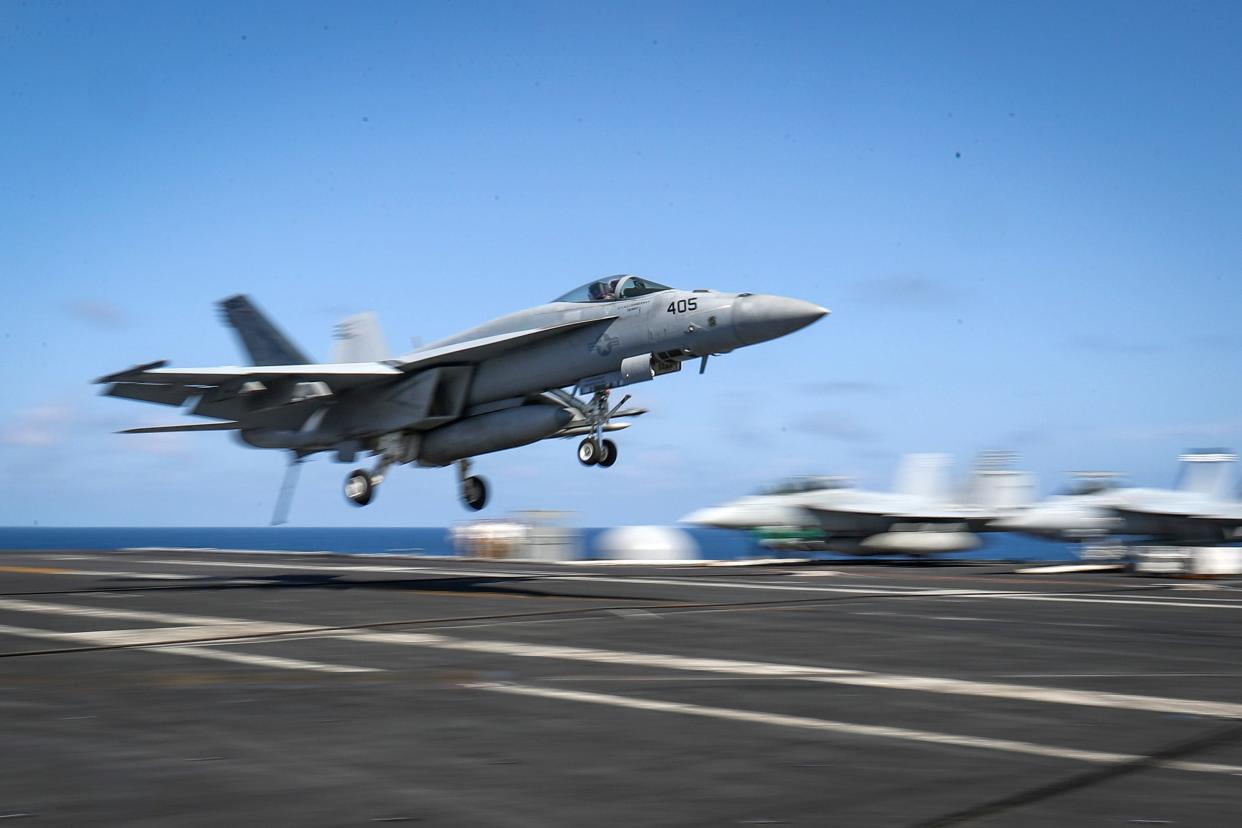US Navy jet crash at Death Valley National Park in California injures 7; status of pilot unknown

A U.S. Navy F/A-18E Super Hornet jet crashed in Death Valley National Park on Wednesday, injuring seven people who were at a scenic overlook in the area dubbed Star Wars Canyon.
Officials are investigating the cause of the crash and searching for the pilot.
The crash took place at about 10 a.m. PST, east of Naval Air Weapons Station China Lake in California, according to a statement posted to the U.S. Naval Institute's website. The area is popular with aviation photographers and fighter jet aficionados, who come to watch the jets soar through the chasm.
“I just saw a black mushroom cloud go up,” said Aaron Cassell, who was working at his family’s Panamint Springs Resort about 10 miles away and was the first to report the crash to park dispatch. “Typically, you don’t see a mushroom cloud in the desert.”
Death Valley National Park spokesman Patrick Taylor say the seven were park visitors and have only minor injuries.
The single-seat jet was assigned to the 'Vigilantes' of Strike Fighter Squadron (VFA) 151 at Naval Air Station Lemoore, the statement said. The squadron is part of an air group attached to the aircraft carrier USS John C. Stennis.
“Search and rescue personnel are on scene and the status of the pilot is currently unknown. The cause of the crash is currently under investigation," spokeswoman Lt. Cmdr. Lydia Bock said the statement.
U.S. Naval Air Forces tweeted the crash happened during a "routine training flight."
The aircraft from VFA-151 was on a routine training flight when the mishap occurred. Search and rescue units from @NAWS_CL and NAS Lemoore are on scene. The cause of the mishap is under investigation.
— flynavy (@flynavy) July 31, 2019
"NAWS China Lake is located in the Western Mojave Desert region of California, approximately 150 miles north of Los Angeles. The installation is the Navy's largest single landholding, representing 85 percent of the Navy’s land for" research, development, acquisition, testing and evaluation, according to the installation's website.
Ambulances were sent to the crash site near Father Crowley Overlook, said park spokesman Patrick Taylor. According to initial reports, seven park visitors had minor injuries.
KABC-TV spoke to tourists who said they were treated for minor burns and cuts from flying fragments after the plane crashed and exploded.
The injured tourists told the news station they were taking photos of the sweeping landscape when the jet screamed into view and suddenly slammed into the canyon wall.
The lookout point got its name for its mineral-rich red soil and its red, gray, and pink walls, evocative of Star Wars character Luke Skywalker's home planet, Tatooine. Training flights are a near-daily feature, with jets passing so close that viewers can see pilots' faces.
Cassell said he first heard the roar of the jets, and then saw a cloud of smoke.
“It looked like a bomb,” Cassell said. “To me that speaks of a very violent impact.”
His father drove up to the area after the crash and saw a large black scorch mark and shattered pieces of the jet scattered throughout the area between the parking lot and lookout. A nose cone from the jet was the size of a bowling ball and the rest of the debris was no larger than a ball cap, Cassell said.
Contributing: The Associated Press
This article originally appeared on USA TODAY: US Navy jet crashes at Death Valley National Park in California

